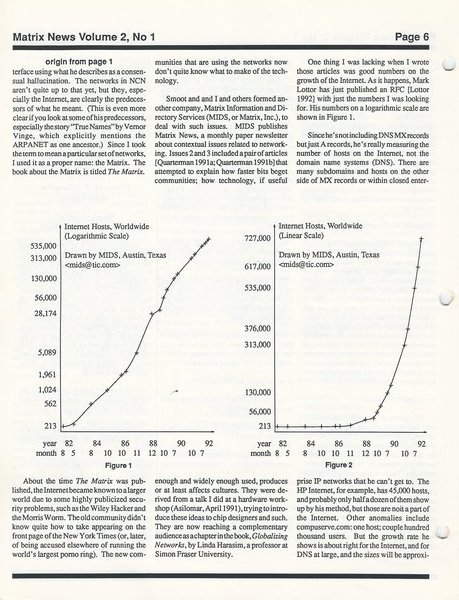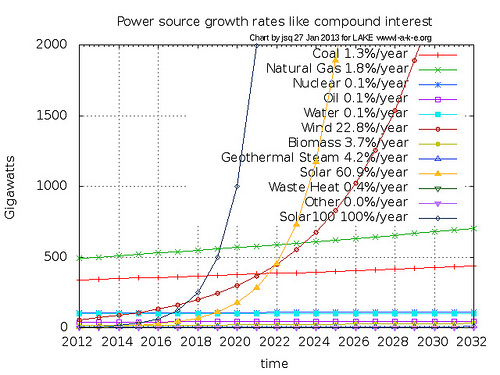A graph Bloomberg New Energy Finance posted illustrates the recent 60%+ growth deployed solar capacity, but BNEF fails to project solar’s compound interest growth forward.
Look at the solar numbers in that graph:
| 2008 | 2009 | 2010 | 2011 | 2012 |
|---|---|---|---|---|
| 1.6 | 2.0 | 2.9 | 4.9 | 8.0 |
| Change | 25% | 45% | 69% | 63% |
 Then look at that last row I added, which is each year’s
percentage increase over the previous year, as in
8.0 for 2012 divided by 4.9 for 2011 = 1.63 or 63%.
Slightly more for the previous year, and less in years before that.
In other words, the annual compound growth rate for solar is
around the 65% rate reported
by the solar industry.
Then look at that last row I added, which is each year’s
percentage increase over the previous year, as in
8.0 for 2012 divided by 4.9 for 2011 = 1.63 or 63%.
Slightly more for the previous year, and less in years before that.
In other words, the annual compound growth rate for solar is
around the 65% rate reported
by the solar industry.
And slightly higher than the 60.9% FERC rate I used in my prediction of nine (9) years for solar to pass wind in about 9 years, and natural gas in about a decade. Sooner if we get rid of some barriers by for example fixing that antiquated 1973 Georgia law that impedes private financing and investment for solar power in Georgia.
What does BNEF make of these numbers? They don’t get it. They convert that exponential compound growth rate back to more linear in their projections of “Additions to Power Generation Capacity 2013 to 2030”:
This leads BNEF to conclude (according to Joshua S. Hill in CLeantechnica 25 April 2013):
In terms of existing power generation capacity by 2030, analysts believe that renewable technologies will account for 50%, up from 28% currently running in 2012. Looking specifically at power produced, renewables’ share will increase from 22% in 2012 to 37% in 2030.
 BNEF also projects not much decrease in coal until 2030, which may be true
worldwide, but is not likely going to be the case in the U.S.
We can ignore that BNEF lumps biomass and geothermal in with renewables
(geothermal mostly is, biomass is not) because even in BNEF’s projections
those account for little of either the installed capacity or its increase.
BNEF also projects not much decrease in coal until 2030, which may be true
worldwide, but is not likely going to be the case in the U.S.
We can ignore that BNEF lumps biomass and geothermal in with renewables
(geothermal mostly is, biomass is not) because even in BNEF’s projections
those account for little of either the installed capacity or its increase.
The big increases come from wind and solar. Indeed. But BNEF is way low on wind and solar, and very far low on solar PV. That’s like assuming in 1993 that the Internet would scale linearly to 2003. Which as we all know is not what happened: it scaled up exponentially like compound interest.
Now BNEF is projecting for global power production, not just U.S., so I’ll cut them some slack. However, if the U.S. keeps on with that FERC solar compound growth rate, it will catch up and pass current solar leaders such as Germany. That plus Japan is finally serious about solar and China leads the world in solar and wind investment. The world will switch to renewable solar and wind, and it will do it quickly. Probably much faster than BNEF thinks.
-jsq
Short Link:


